What are food safety standards?
System standards are documented descriptions of what it takes to do something according to requirements. There are many different types of system standards and different production sectors have their own. In food safety in Finland and Europe, the main standards used are BRCGS Food, FSSC 22000, IFS Food and ISO 22000.
The first three of these (BRCGS Food, FSSC 22000 and IFS Food) are GFSI-approved standards. This means that their level and scope has been verified by the international Global Food Safety Initiative, an organisation born out of the need to harmonise the vast and often confusing world of different food safety standards. Only the standards with the highest level of ambition receive GFSI accreditation.
BRCGS Food Issue 9
The current BRCGS Food standard was originally born out of the British Retail Consortium’s need to set uniform quality, safety and operational standards for the food industry producing private label products for the UK market. The first version of the standard was published in 1998. The BRCGS has since expanded into a family of standards covering not only food production but also logistics, packaging, consumer products and wholesale distribution.
BRCGS Food is currently a very widely used so-called GFSI standard. It is modern in its requirements and its basic features include a grading system to assess the performance of the company’s system, whereby companies are graded according to the number of anomalies or errors found in the certification audit. There is also an upper limit on the number of deviations, so the system must be in place to qualify for certification in the first place.
IFS Food 8
The origin of the IFS Food standard is very similar to that of the BRC GS standard, but the IFS Food standards are largely driven by German and French central companies. IFS Food is strong, especially in Central Europe, but is rare in Finland and therefore much less well supported than BRCGS Food or FSSC 22000. IFS is a family of standards similar to BRCGS and covers not only food production, but also logistics, packaging materials, consumer products, wholesale and retail. IFS Food has a clear classification system and is of the same level of sophistication as BRCGS Food.
FSSC 22000
The FSSC 22000 standard is based on the ISO 22000 standard and is developed by the FSSC Foundation. The FSSC 22000 standard is the most widely used GSFI standard in the world. It is somewhat lower than the BRCGS Food and IFS Food standards, inter alia because it lacks a grading system and does not have the same limitation on the number of audit deviations as competing standards. The strength of FSSC 22000 is its applicability to virtually the entire food supply chain, from storage and manufacturing to wholesale and distribution.
The FSSC 22000 standard is the common food safety standard in Finland and has been the first step for many companies into the world of GFSI. However, the lack of a grading system undermines the credibility of FSSC 22000 in the eyes of many operators.
Is a certified food safety system mandatory?
Increasingly stringent supplier requirements have led to a shift in the food industry, in particular to the BRCGS Food standard and to some extent to the IFS Food standard. The main motivation for this has been the supplier requirements of the Lidl chain. If an industrial plant wants to be able to supply Lidl with products under its own brand, it must be certified under either BRCGS Food or IFS Food.
The more complex the supply chains and systems in a food business, the greater the need to ensure product safety. A standardised food safety system is a strong indicator of operational reliability and product safety. The transparency of operations that comes with certification increases trust between different stakeholders, and it also strengthens consumer confidence in the establishment’s operations. For a food business to succeed, building up a certified food safety system is becoming a basic requirement at the latest when trading with central distributors or when seeking wider access to the EU market.

